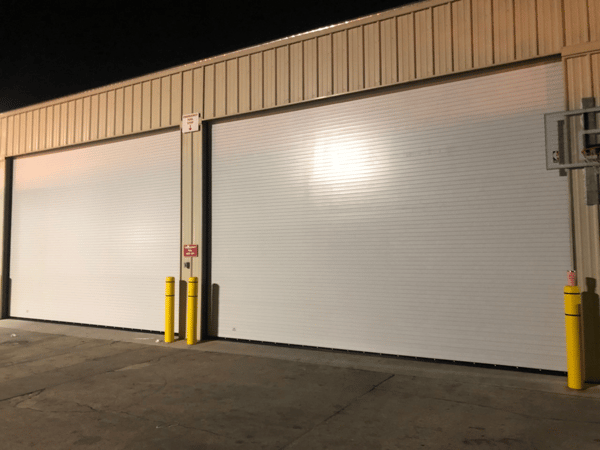How to Stay Safe During Hurricane Season with Rolling Doors
The threat of hurricane season lasts for 6 long months, spanning from June-November, and according to the National Oceanic and Atmospheric Administration (NOAA), we're in for a rough one! They've predicted 2020 to have an above average hurricane season, making it important for those susceptible to stay protected. The best way to guard your residential, commercial, or industrial building from hurricanes is by installing wind load rated, rolling doors. In this post, we'll explain how rolling doors provide the ultimate protection for your building.

What are Hurricane Doors, and Why do They Matter?
Hurricane Rated doors serve to protect your building against tropical storms, hurricanes, high speed wind damage, air-borne debris, and pressure changes. These doors enhance security and protect the structural integrity of buildings during severe weather.
But why do doors matter so much? Being the largest break in a building's structural base, doors are exceptionally vulnerable when severe weather strikes. Inadequate doors can lead to devastating and costly impacts from severe weather. When doors aren't equipped to handle high-speed wind damage or air-borne debris, high speed wind pressures can enter the building. These pressures build, and can cause damage severe enough to demolish the entire structure of the building. Post-disaster investigations conducted by the Federal Emergency Management Agency (FEMA) show that once a building's envelope is breached, it's common to see significant damage to the remainder of the building. That responsibility makes doors one of the most important structural elements to any building.
How to stay safe during hurricane season:
- Determine Exposure
- Identify Codes and Regulations
- Invest in the Right Product
STEP 1: DETERMINE EXPOSURE
Wind Exposure is classified into different categories. For more guidance with determining your exposure, check out the technical data sheet provided by Door & Access Systems Manufacturers Association International (DASMA), 'Wind Exposure Categories'.
- Exposure B: Urban and suburban areas, wooded areas, or other terrain with numerous closely spaced obstructions having the size of single-family dwellings or larger, prevailing for a distance greater than 1,500 feet in any direction for the installation.
- Exposure C: Open terrain with scattered obstructions having heights generally less than 30 feet. (commonly associated with flat open country and grasslands)
- Exposure D: Involves a structure a close distance (typically within 600 feet) from an "open waterway" one mile or more across.
STEP 2: IDENTIFY CODES AND REQUIREMENTS
Are You Required to Have Wind Rated Rolling Doors? To learn more about requirements in your area, Door & Access Systems manufacturers Association International (DASMA), has developed a number of resources to assist those connected with the building industry by clarifying the relationship between wind loads and rolling doors.
Wind Load Rated Resources:
STEP 3: INVEST IN THE RIGHT PRODUCT
Because of their inherent strength, Rolling Doors offer superior protection from high speed winds and air-borne debris. With interlocking steel slats, wind-locks, and heavy duty guide assemblies, you'll have a product that can withstand great wind pressures. Want to learn more about our Wind load and impact ratings? Check them out here.
Rolling Doors are a surefire way to protect your building, and stay safe during the lingering months of hurricane season. When used properly, these products can enhance the security of your building, and even save it from destruction. By determining your exposure, and identifying the codes and requirements that pertain to your geographic location, you can choose the right product and stay protected all season long.
Are you ready to take your project next-level with rolling doors?
